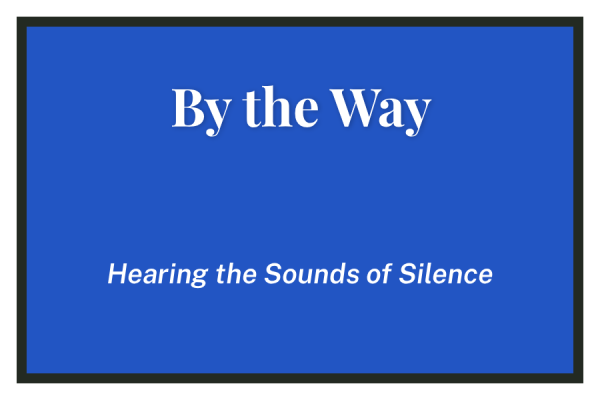Dangerous Silence
Why We Should Be Talking about Suicide
There is something wrong with the casual way in which we talk about suicide in our school. All too often, I hear, “I’m going to kill myself,” or the almost too vivid, “I’m going to shoot myself.” I catch myself doing the same sometimes. But many are not actually taking into account what these words actually mean.
According to the American Foundation for Suicide Prevention, suicide is the tenth leading cause of death in America. And according to the Center for Disease Control, the suicide rate for teen girls from ages 15 to 19 has doubled from 2007 to 2015, with suicide in teen boys from ages 15 to 19 increasing by thirty percent within the same time period.
With these growing rates, conversation regarding suicide has seeped into our popular culture. Take Logic’s song, 1-800-273-8255, named after the national suicide prevention hotline, which illustrates the journey a suicidal person goes through. Lil Uzi Vert’s three time platinum song, “XO Tour Llif3,” repeats these haunting lyrics: “All my friends are dead. Push me to the edge.”. After the March 2017 release of the hit Netflix show “Thirteen Reasons Why,” a series which chronicles the events that happen prior to main character Hannah Baker’s suicide, the issue of suicide to the table with greater frequency.
Schools around the country have taken notice of this topic’s severity, but also find ways of handling it. At the Latin School of Chicago, according to a student in the sophomore class, Latin has a class called “affective ed,” which runs similar to our 9th grade health classes. The freshmen talk about mental health, and in their classes, which meet twice every eight days, they discuss the topic of suicide.
Upper School Counselor Binita Donahue said that at her old school Glenbard East in Lombard, Ill. with the parents permission, the school screened all the freshman for suicidality through health class. A form was sent out asking if in the last twelve months had student attempted suicide, and if in the last thirty days the student had thought about killing him or herself. If any students answered “yes,” the health consultants followed up with the student on that day.
In the freshman seminar at Parker, two days out of the mental health week are spent on suicide. Donahue takes events from popular culture —like when Robin Williams died, or the release of “Thirteen Reasons Why”— but she also uses information from Erika’s Lighthouse which is a non-profit organization whose main goal is to “educate school communities about teen depression, eliminate the stigma associated with mental illness and empower teens to take charge of their mental health.”
But these conversations are occurring seemingly everywhere else, and many students here are still not taking this topic seriously. The difficulty that this topic brings is obvious: it is a topic that is life or death, and it forces a certain vulnerability that is hard to ask for out of a teenager between the ages of 14 and 18.
The fact that there are numerous students in the Upper School talking casually amongst their friends about hanging themselves and gesturing with their hands the action of shooting themselves should be very alarming.
I make these jokes too, and I know that it is hard to stop a habit like this. But I urge you: take suicide seriously, and stop making casual jokes about it. To understand why you need to take this seriously, you need to know that this topic has serious impact. Stop yourself from making these jokes, and if you do, recognize why it is wrong to do so.
The conversations should be integrated through our classrooms as well: when studying “Hamlet,” for example, we might take a second after Ophelia’s suicide to talk about the issue. These conversations should also be taken seriously. As teens, it is easy for us to stray from these serious topics by masking them with our own immaturity and jokes, but in actually discussing this topic with earnestness, we might allow it to have a meaningful effect.
Suicide’s main perpetrator is silence. So, in maintaining this silence and not bringing this topic to the light, we are actually increasing the risk. I do not expect that students will be open right off the bat to talking about suicide, but by just having these conversations, suicide can become a less daunting, impossible topic to talk about.







